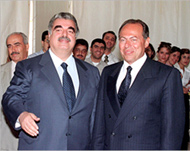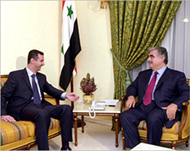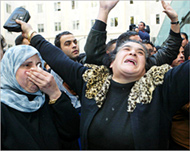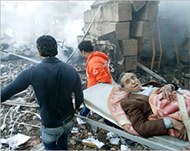Key developments on al-Hariri’s watch
Lebanon’s former prime minister Rafiq al-Hariri, who was killed in a massive blast in Beirut, was a dominant figure on the country’s political and business scenes for years.

Following are some of the key developments in Lebanon since he first took office in 1992, two years after the end of the devastating 15-year civil war.
1992
31 October: Al-Hariri takes office as prime minister.
29 December: Lebanese army takes control of southern Beirut, a stronghold of the resistance group Hizb Allah, for the first time in nine years.
1993
20 May: Al-Hariri reinforces his control of Lebanon‘s finances by naming close ally Riad Salama as head of the Central Bank of Lebanon.
9 August: About 600 Lebanese troops deploy in the UN interim force-controlled zone in southern Lebanon, north of the Israeli-occupied zone, about 10 days after a massive Israeli military offensive into the country.
2 November: Launch of Beirut city centre reconstruction plan, led by the Solidere construction company, of which al-Hariri is a main shareholder.
1994
23 March: Cabinet dissolves Samir Giagia’s Christian Lebanese Forces party.
21 April: Giagia and 150 followers arrested over a church bombing north of Beirut that killed 10 worshippers in February.
 |
|
With President Emile Lahud (R) |
8-14 May: Al-Hariri suspends government activity because of President Ilias Harawi’s resistance to a cabinet reshuffle. Al-Hariri resumes activity following talks with Syrian President Hafiz al-Asad in Damascus.
1 December: Al-Hariri says he will resign, apparently blaming a lack of cohesion in his cabinet. A week later he goes back to work after assurances from Damascus of greater cooperation from Shia leaders.
1995
19 May: Al-Hariri resigns, saying he needs a government of solidarity. He forms a government of “the faithful” a week later.
19 October: Parliament amends the constitution to extend Harawi’s mandate by three years.
1996
26 April: Ceasefire agreement ends Israel‘s punitive Grapes of Wrath operation against resistance fighters in southern Lebanon, which left 175 people dead, mostly civilians.
7 November: Al-Hariri forms his third government.
 |
|
With Syria’s Bashar al-Asad (L) |
16 December: Al-Hariri receives promises of $3.2 million in aid over three years at a donors’ conference in Washington.
1997
29 May: Government admits to phone taps “for reasons of national security”.
1998
15 October: General Emile Lahud is elected president by parliament and succeeds Harawi on 24 November.
30 November: Al-Hariri refuses to form a new government following Lahud’s election.
4 December: Veteran Sunni leader and economist Salim al-Hoss takes office as prime minister.
2000
24 May: Israeli troops pull out of southern Lebanon, ending 22 years of occupation.
 |
|
Lebanese women react to news |
26 October: Al-Hariri becomes prime minister for the fourth time.
2001
15 April: Israel carries out an air strike on a Syrian military radar station in Lebanon.
14-18 June: Syria withdraws troops from Beirut and redeploys them eastward to the Bekaa Valley.
2002
10 January: Lebanon and the European Union sign an association agreement.
1 February: The government introduces a new 10% value added tax (VAT).
3 March: Syria‘s Al-Asad visits Lebanon for the first time as president, in the first such trip to Lebanon by a Syrian head of state in more than 25 years.
27-28 March: Beirut hosts the 14th Arab League summit that adopts a comprehensive initiative offering peace with Israel in return for a pullout from occupied Arab territories.
2003
 |
|
A bomb near Beirut’s seafront |
16 April: Al-Hariri resigns. A day later, he forms what is considered the most pro-Syrian government since the end of the civil war.
2004
2 September: The UN Security Council adopts Resolution 1559 calling for the withdrawal of foreign forces from Lebanon and respect for its sovereignty – implicitly censuring Damascus.
3 September: Lebanese parliament bows to Syrian pressure and approves a controversial constitutional amendment giving Emile Lahud another three years in office.
6 September: Four ministers quit the cabinet in protest at the constitutional amendment.
20 October: Al-Hariri resigns as prime minister.
26 October: Prime minister designate Umar Karami forms a new 30-member cabinet, with keys posts going to pro-Syrian figures and with women entering government for the first time in Lebanon‘s history.
2005
14 February: Rafiq al-Hariri is killed in a massive blast in a seafront area of central Beirut.